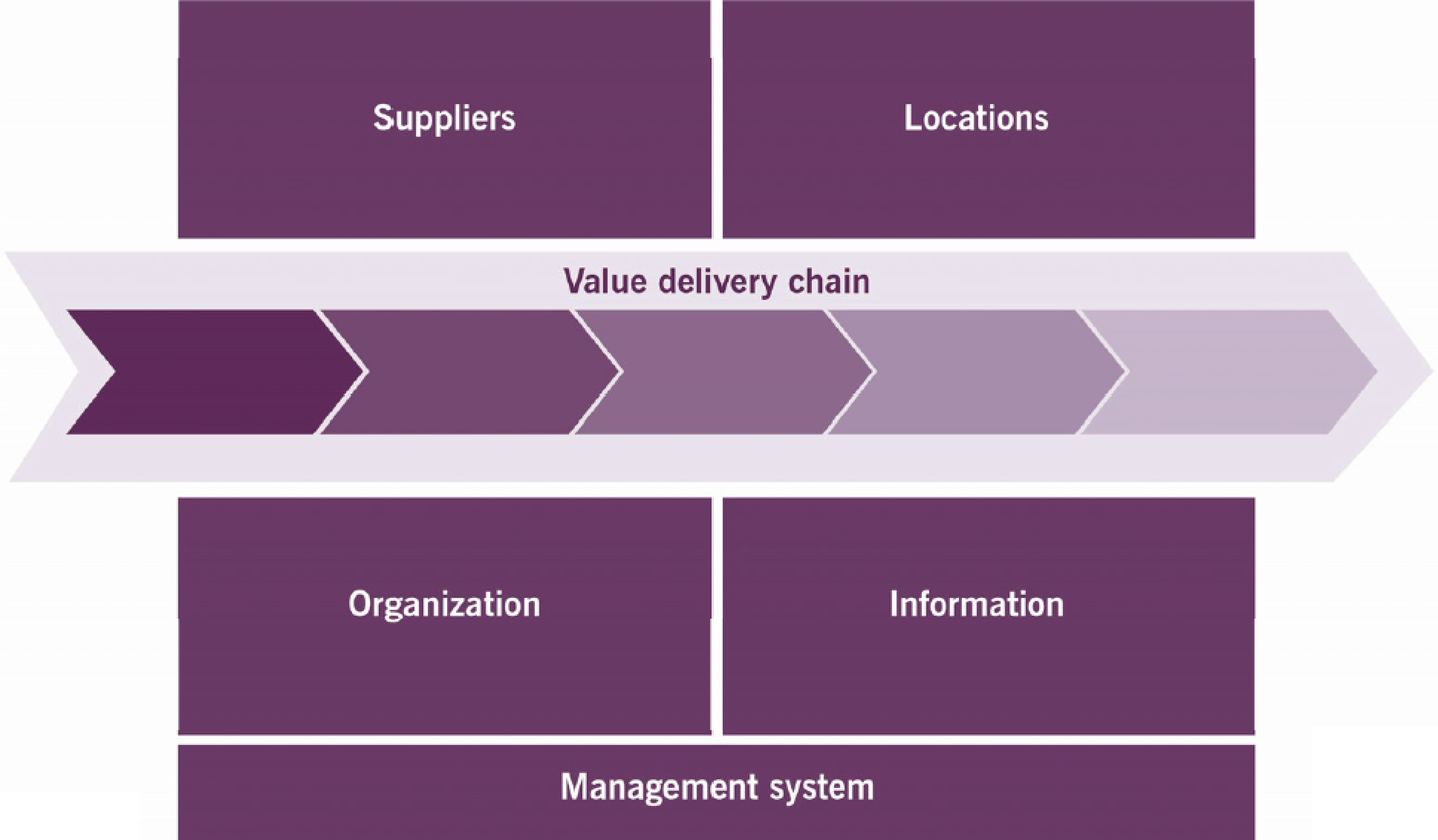ITIL 4 Strategic Leader Certification Course: Implementing a Digital Strategy - Operating Models
Operating model: conceptual and/or visual representation of how an organization cocreates value with its customers and other stakeholders, as well as how the organization runs itself:
- Business models illustrate how a business captures value
- Operating models illustrate how the organization will run
Represents a series of practices and choices:
- Interactions determine value proposition delivery and market position
- Value proposition is not directly in the operating model, but it is the driver for the operating model
Tool facilitating the design/configuration of organization’s operations, 2 themes:
- Key work that takes place
- Context in which the value streams perform
1. Operating model canvas

2. Operating models for digital organizations
Contents shared with operating models:
- Describes how value is created
- Defines value streams and their management
- Defines roles of people, processes, and technology in those value streams
- Defines the partners, their roles, and contracts
- Emphasizes importance of culture, defines how to promote the necessary of culture
- Identify consumers and their roles in the value streams, the products and services consumed and influencing factors
- Includes a portfolio of projects, services, and products, and investing information maintain it
Unique features include:
- Technologies specified are emerging technologies
- Emphasizes innovation and experimentation
- Processes will be more agile in nature (e.g. speed to market, minimum viable products, incremental development of products and services)
3. Structuring the organization
A digital business needs to be flexible and responsive in order to rapidly respond to market conditions and to adopt new emerging practices and technology to provide sustained competitive advantage:
- Traditional hierarchical organizational structures are changing (flat structures, time to market, Agile/Lean/DevOps)
- Shift to a product model moves customer management away from the product team (decentralization)
- Customers expect delight, not just satisfaction
To be successful, must have:
- A known strategic alignment and accountability across all teams, departments, divisions…
- Common understanding of value, outcomes, costs, risks (VOCR)
- Collaboration and partnerships
- Executive leadership open to learning
Go back to ITIL 4 Strategic Leader Certification Course: Implementing a Digital Strategy to finish this chapter or to the main page ITIL 4 Strategic Leader Certification Course.
Interesting Management
-

Part 1: A good manager, better team motivation, better team productivity, better team results
When you are managing a team, “how to be a good manager” is the “must”...
-

Report optimization, increase your time management
As manager, I am doing many reports, even when I was an ITIL consultant, I still needed to do many reports...
-

Tools to get your ITIL intermediate certifications, the missing 15 points for the ITIL 4 Managing Professional
ITIL V3 is going to be obsolete...
-

The importance of the first customer meeting for the service
Managing an IT service when I start a new company is not an easy task, particularly true, if the service...



